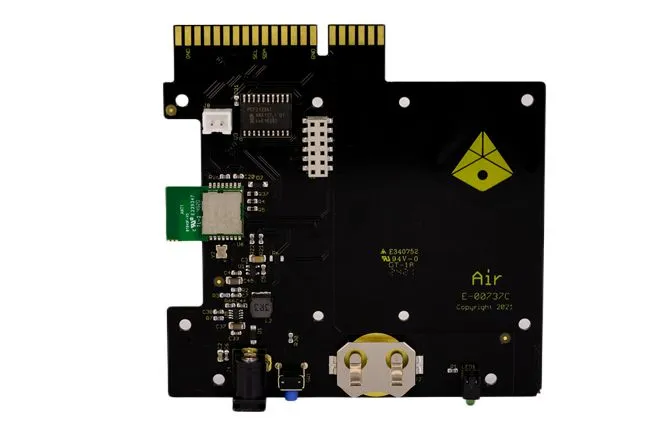Effective PCB Power Distribution Network Design
Effective PCB Power Distribution Network (PDN) design is crucial for ensuring stable and reliable power delivery in electronic systems. A well-designed PDN minimizes noise, reduces electromagnetic interference, and maintains signal integrity across the board. Key elements of an effective PDN include proper component selection, optimal trace routing, strategic decoupling capacitor placement, and impedance matching. By implementing these design principles during PCB assembly, engineers can create robust power systems that support high-performance electronic devices while mitigating issues like voltage drops and power-related failures.

Grasping PDN Fundamentals in PCB Assembly
The Role of PDN in PCB Design
Power Distribution Networks play a vital role in the overall performance and reliability of printed circuit boards. During PCB assembly, the PDN is responsible for delivering clean, stable power to all components on the board. This network consists of power planes, traces, vias, and decoupling capacitors that work together to maintain voltage levels and minimize noise.
A well-designed PDN ensures that each component receives the correct voltage and current, even under varying load conditions. This is particularly important in modern high-speed digital circuits, where rapid switching and high current demands can lead to power integrity issues if not properly addressed.
Common Challenges in PDN Design
Designing an effective PDN comes with several challenges that PCB assembly engineers must overcome:
- Voltage Drops: As current flows through the PDN, resistance in traces and planes can cause voltage drops, potentially starving components of necessary power.
- Power Plane Resonance: Large power planes can act as resonant cavities, amplifying noise at specific frequencies.
- Switching Noise: High-speed digital components can generate significant noise during state transitions, which can propagate through the PDN.
- EMI Generation: Poorly designed PDNs can act as antennas, radiating electromagnetic interference and causing compliance issues.
Addressing these challenges requires a comprehensive approach to PDN design, integrating best practices from the initial layout stages through final PCB assembly.
Key Strategies for Optimizing PDN Performance
Implementing Proper Decoupling Techniques
Decoupling capacitors are essential components in PDN design, serving as local energy reservoirs that supply instantaneous current demands and filter out high-frequency noise. During PCB assembly, strategic placement of decoupling capacitors is crucial for maintaining power integrity.
To maximize the effectiveness of decoupling:
- Place capacitors as close as possible to power pins of ICs
- Use a range of capacitor values to address different frequency ranges
- Consider using embedded capacitance in multilayer boards for high-frequency decoupling
By implementing proper decoupling techniques, PCB designers can significantly reduce power supply noise and improve overall system stability.
Optimizing Power Plane Design
Power planes are fundamental elements of PDNs in multilayer PCBs. Effective power plane design involves careful consideration of plane spacing, size, and shape. Some key strategies include:
- Maintaining a low-impedance path between power and ground planes
- Using split planes to isolate noisy digital sections from sensitive analog circuits
- Implementing stitching capacitors between split planes to maintain low AC impedance
During PCB assembly, ensuring proper connections between planes and components is critical for maintaining the integrity of the power distribution system.
Utilizing Advanced Routing Techniques
Trace routing plays a significant role in PDN performance. Advanced routing techniques can help minimize inductance and resistance in power delivery paths:
- Use wide traces or multiple parallel traces for high-current paths
- Implement star topology for sensitive power distributions
- Consider using buried vias for improved current distribution in multilayer boards
These routing strategies, when applied during PCB assembly, contribute to more efficient power delivery and reduced electromagnetic emissions.
Advanced Analysis and Simulation in PDN Design
Utilizing Impedance Analysis Tools
Impedance analysis is a crucial step in PDN design optimization. By using specialized software tools, engineers can model the PDN's frequency response and identify potential resonances or high-impedance areas that could lead to power integrity issues. During the PCB assembly process, results from impedance analysis can guide component placement and PCB stack-up decisions to achieve optimal power delivery performance.
Implementing Time-Domain Simulations
Time-domain simulations provide valuable insights into the dynamic behavior of PDNs under various operating conditions. These simulations can help identify:
- Voltage droops during high-current events
- Ringing and overshoot in power delivery
- Effectiveness of decoupling strategies
By running these simulations before finalizing the PCB assembly, designers can make informed decisions about component selection and layout optimizations.
Leveraging Electromagnetic Field Solvers
Advanced electromagnetic field solvers offer a comprehensive approach to PDN analysis. These tools can simulate the entire PCB, including complex interactions between power and signal layers. Benefits of using EM field solvers in PDN design include:
- Accurate prediction of power plane resonances
- Identification of potential EMI hotspots
- Optimization of via placement for improved current distribution
Integrating insights from EM simulations into the PCB assembly process can lead to significant improvements in overall power integrity and electromagnetic compatibility.
Conclusion
Effective PCB Power Distribution Network design is a critical aspect of modern electronic systems. By understanding PDN fundamentals, implementing key optimization strategies, and leveraging advanced analysis tools, engineers can create robust power delivery systems that support high-performance, reliable electronic devices. Throughout the PCB assembly process, attention to PDN design principles ensures that the final product meets stringent power integrity and electromagnetic compatibility requirements, paving the way for next-generation electronic innovations.
Advanced Stack-Up & Impedance Control for Stable PDNs | Ring PCB
Ring PCB Technology Co., Limited offers cutting-edge solutions for PCB and PCBA services, including advanced stack-up and impedance control crucial for stable PDNs. With 17 years of excellence, we provide high-density stack-ups featuring 2-48 layer boards, blind/buried vias, and precise ±7% impedance control. Our smart manufacturing facility ensures top-quality PCBs for various industries. Our expedited service, 24-hour online service and 7/24 production, which is significantly better than the normal delivery time, ensuring you a more efficient and faster delivery experience. For expert assistance with your PCB assembly needs, contact us at [email protected].
References
1. Johnson, H. W., & Graham, M. (2003). High-speed digital design: a handbook of black magic. Prentice Hall PTR.
2. Bogatin, E. (2018). Signal and power integrity-simplified. Prentice Hall Press.
3. Archambeault, B., Drewniak, J. L., & Ruehli, A. E. (2018). PCB design for real-world EMI control. Springer.
4. Wang, Y., & Jiang, T. (2016). Characterization of power delivery networks in PCB and package. IEEE Electromagnetic Compatibility Magazine, 5(1), 56-63.
5. Swaminathan, M., & Engin, A. E. (2008). Power integrity modeling and design for semiconductors and systems. Prentice Hall Press.

Welcome to Ring PCB! Share your inquiry, and receive a tailored quotation!

Ring PCB, your trusted partner for PCB & PCBA Full Turnkey Solutions



